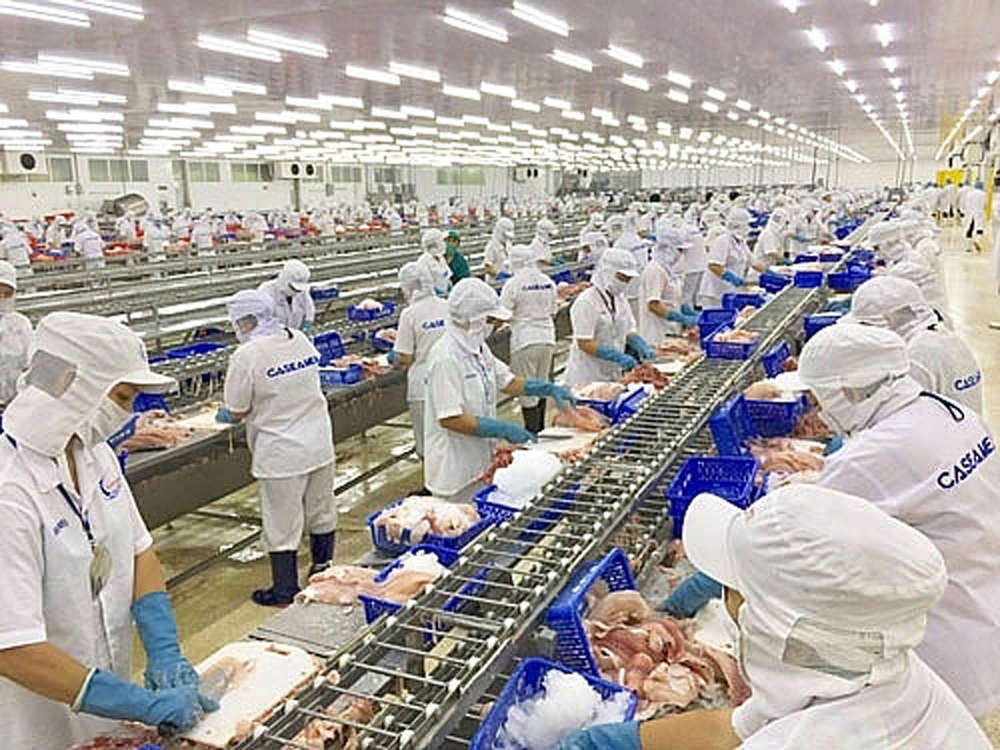Vietnam Seafood
Many expect to increase shrimp exports to China in 2024
According to Vietnam Customs data, by the end of November 2023, Vietnam’s shrimp exports to China and Hong Kong reached 569 million USD, down 8% over the same period last year.
China increased shrimp imports
Analysis by Ms. Kim Thu, shrimp market expert of the Vietnam Association of Seafood Exporters and Producers (VASEP) shows that Vietnam’s shrimp exports to China and Hong Kong continue to decrease by 24% to 52 million USD in November 2023.
According to Ms. Thu, this year, the demand of the Chinese market is unstable. Accordingly, Vietnam’s shrimp exports grew positively for 3 months from June to August, then returned to a decline in September, October and November. However, the decline was not as strong as in the first months of the year. China and Hong Kong are the markets with the lowest decline among the main import markets of Vietnamese shrimp.
The demand for imported Vietnamese shrimp in the Chinese and Hong Kong markets not only depends on economic growth and inventory in this country but also depends heavily on cheap supply from Ecuador.
China’s demand for imported shrimp is still increasing strongly, but because there are too many supplies “rushing” into this market at low prices, it is difficult for Vietnamese shrimp to compete on price. In the last month of this year, Vietnamese shrimp exports to this market are expected to still decrease compared to the same period.
Vietnamese shrimp exports to China and Hong Kong range from 543 million USD in 2019 to 664 million USD in 2022. In the past 5 years, shrimp exports to this market have been unstable but this market still remains Vietnam’s third largest shrimp exporter after the US and Japan. Although shrimp exports to China and Hong Kong markets in 2023 will decrease compared to 2022 (the year when shrimp export turnover reached a record), it will still increase compared to previous years.

Lots of room from the billion-person market
According to Mr. Truong Dinh Hoe, General Secretary of VASEP, in 2023 the fisheries industry faces many challenges. While many important markets dropped sharply, China dropped the least. Therefore, this country is becoming the most important market for Vietnamese seafood, including shrimp.
In terms of opportunities and potential, the Chinese market still has many growth prospects. Notably, China has high diversity, so there will be many opportunities for products such as pangasius thanks to competitive prices. In addition, this country also has a high-end customer base, so it is suitable for deeply processed shrimp products, which is Vietnam’s strength. Many seafood businesses also identify China as an important market that needs to focus on development.
The Covid-19 epidemic has ended, China’s economy has shown positive signs, demand for black tiger shrimp and white leg shrimp is recovering. The geographical position is favorable for Vietnamese businesses exporting to China in terms of logistics costs. Besides, China is promoting economic recovery but it seems they do not spend much budget on domestic seafood production since China does not consider this a key industry with high profits. Therefore, this is an opportunity for Vietnam to increase exports to this market.
Economic experts assess that China will increasingly depend on imported seafood, similar to the model of Western countries. China’s shrimp consumption is large, even more than the US and Europe. In 2023, it is estimated that this country will import a huge amount of shrimp up to 1 million tons, mainly for processing and domestic consumption, with almost negligible export.
The Chinese Ambassador affirmed that the country is ready to expand imports of Vietnamese aquatic and agricultural products. The above statement was made in the context of Chinese President Xi Jinping’s recent visit to Vietnam, opening up many bright prospects in trade cooperation between the two countries.
China is the target market of many shrimp exporting countries such as Ecuador and India with a supply of cheap raw shrimp, so Vietnamese shrimp is under competitive price pressure. Besides, businesses also face competition from shrimp processors in the Chinese domestic market.
To take advantage of opportunities from China, according to experts, trade activities connecting businesses of the two countries need to be further strengthened, in which local trade needs to be given more attention. In addition, there needs to be exchange and sharing of information about market needs and regulations, especially when there are changes in import and export policies.
(Source: https://english.haiquanonline.com.vn/)



 Tiếng Việt
Tiếng Việt